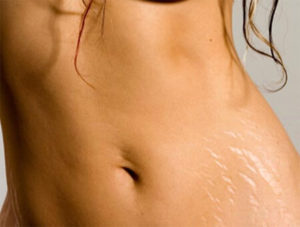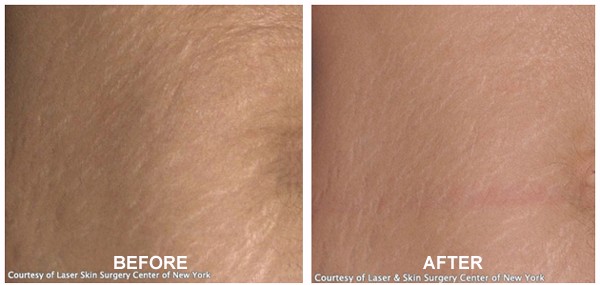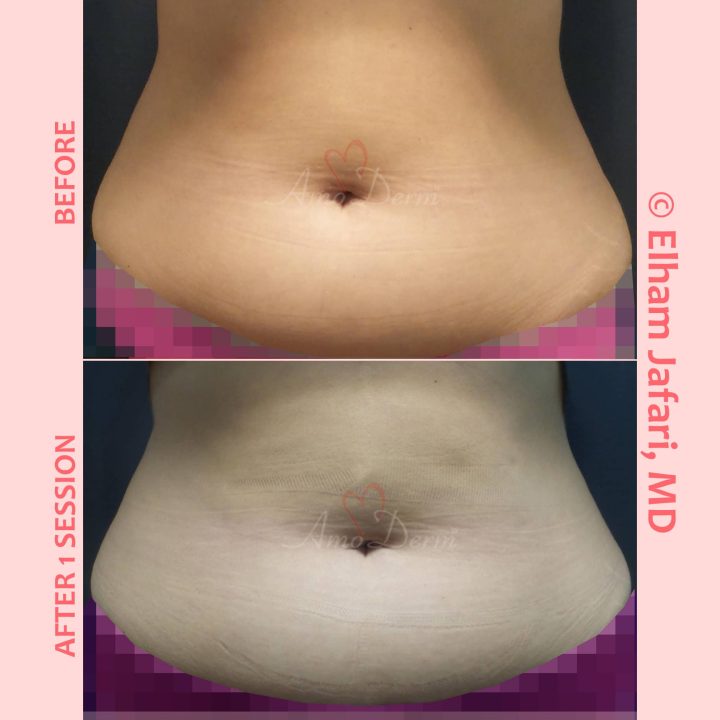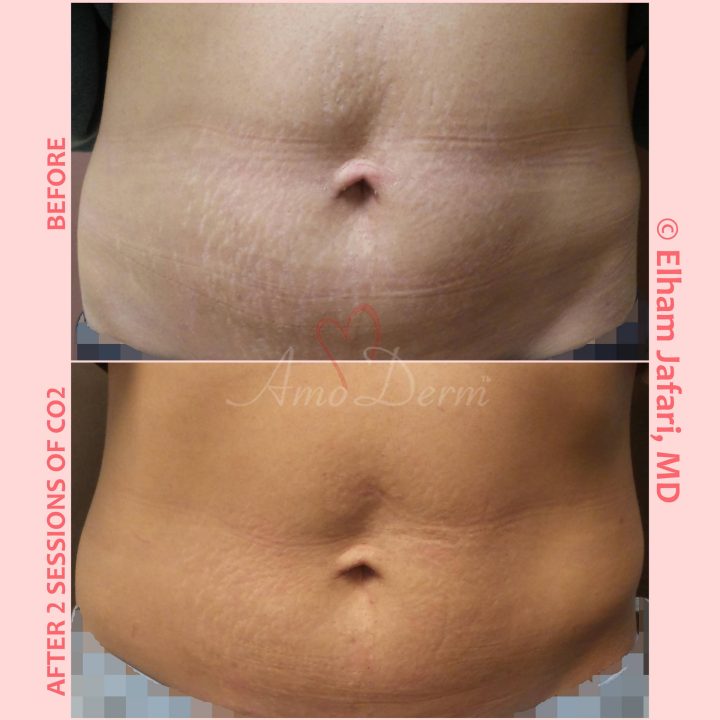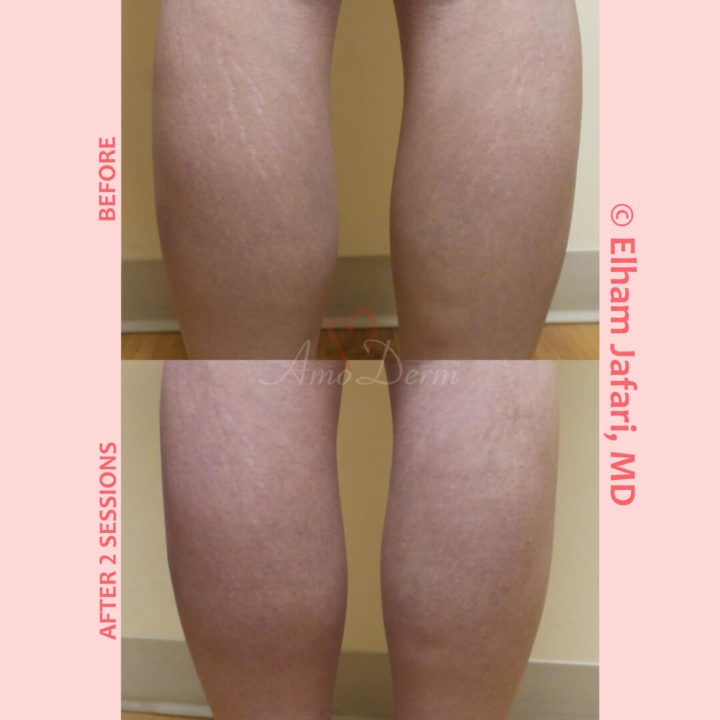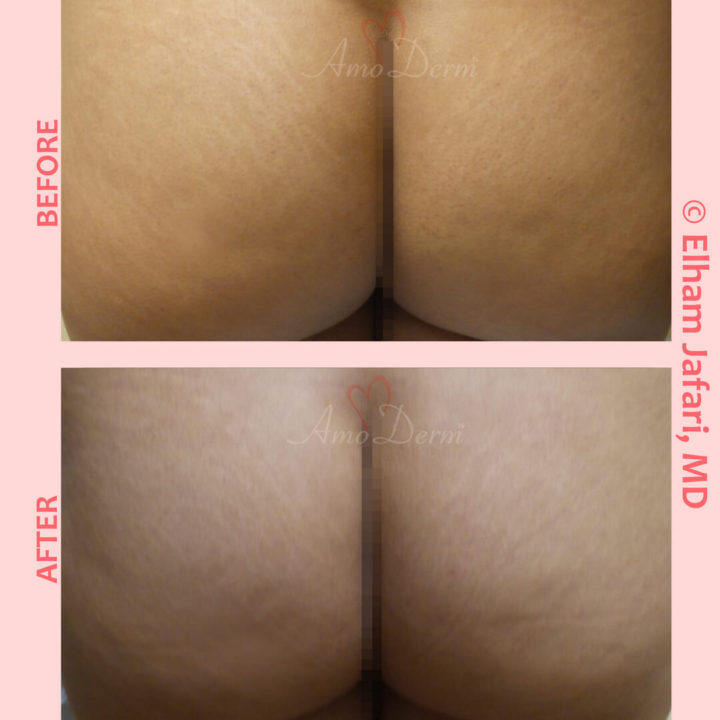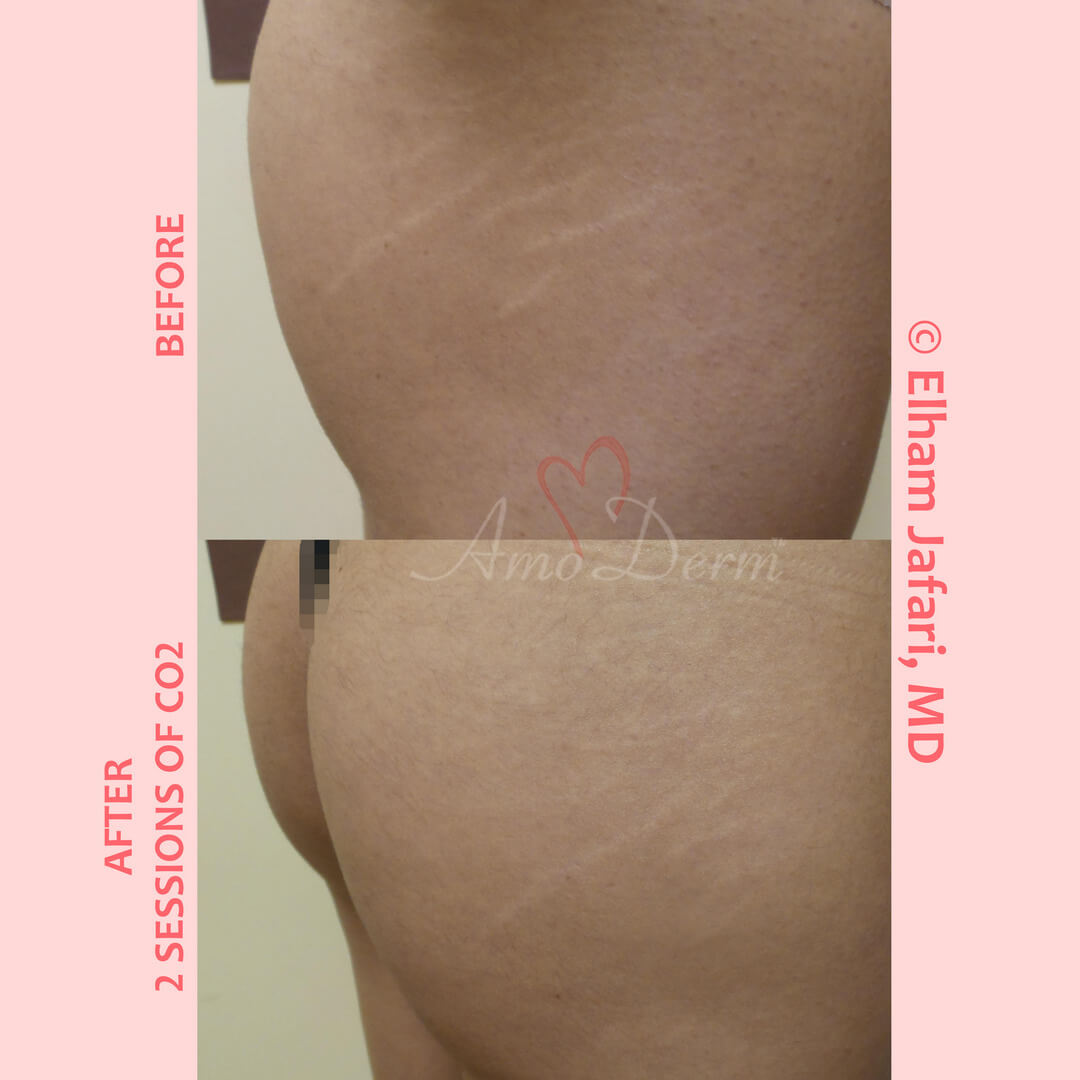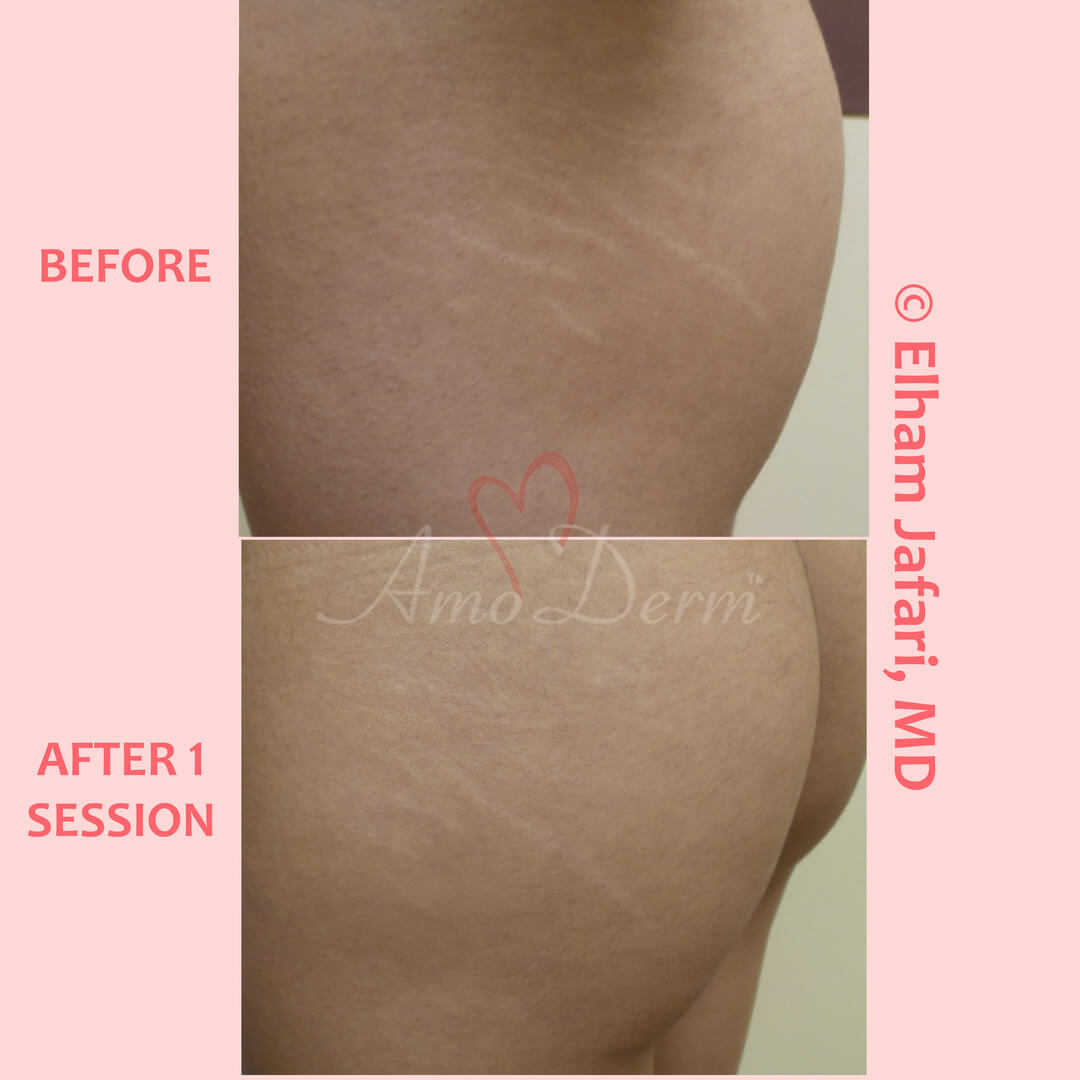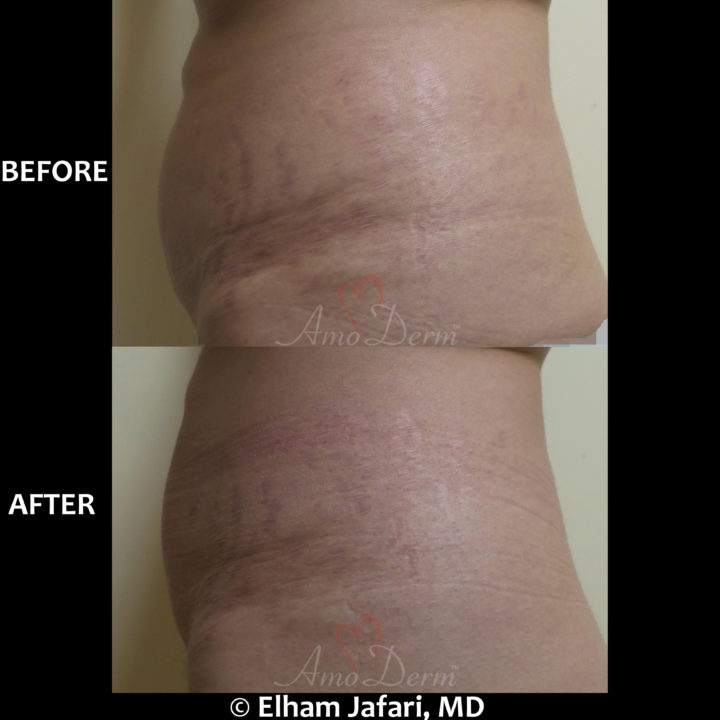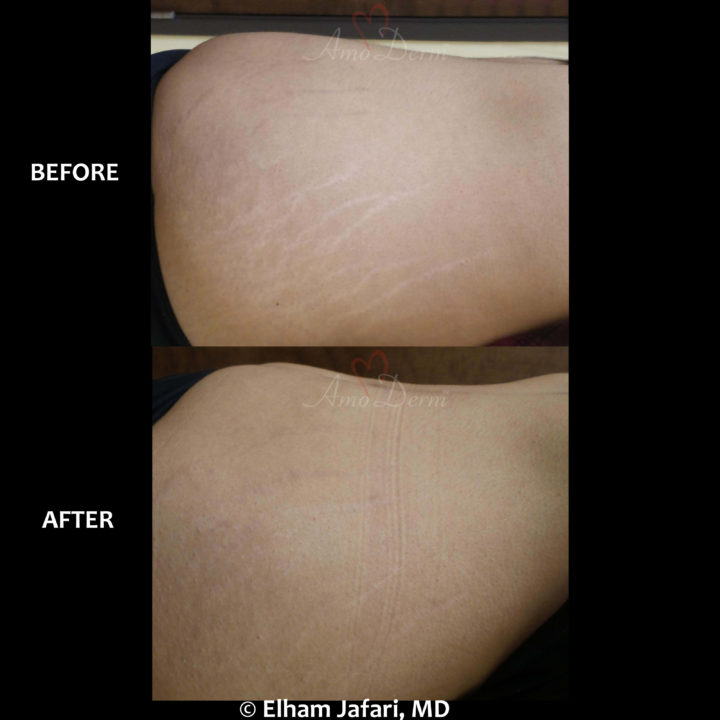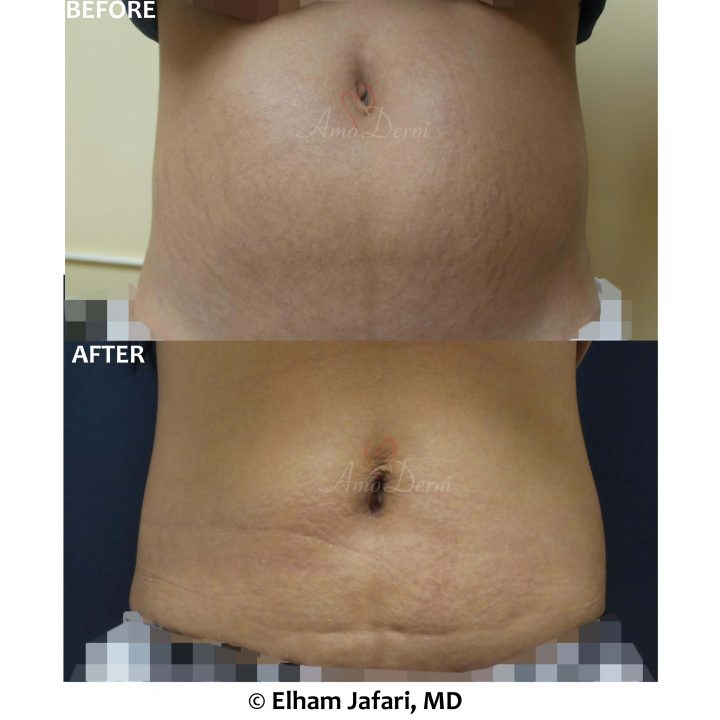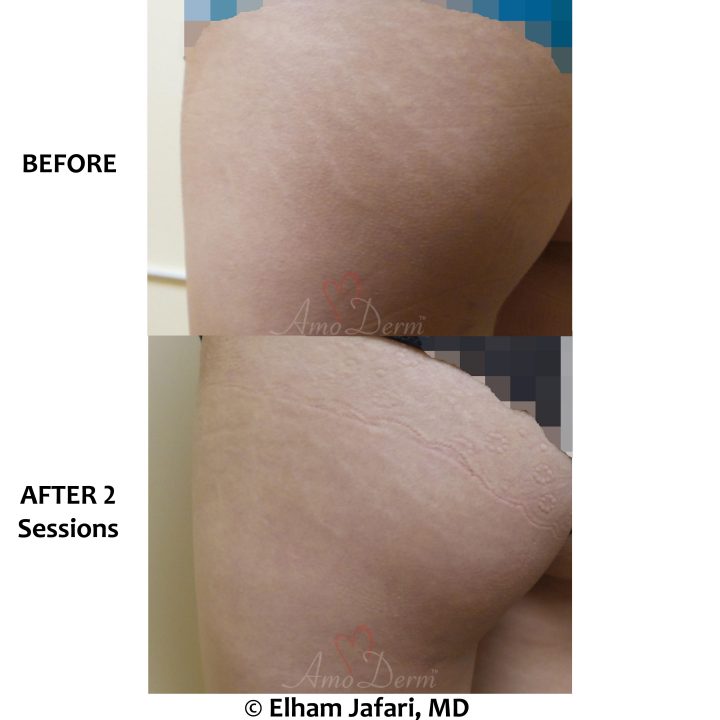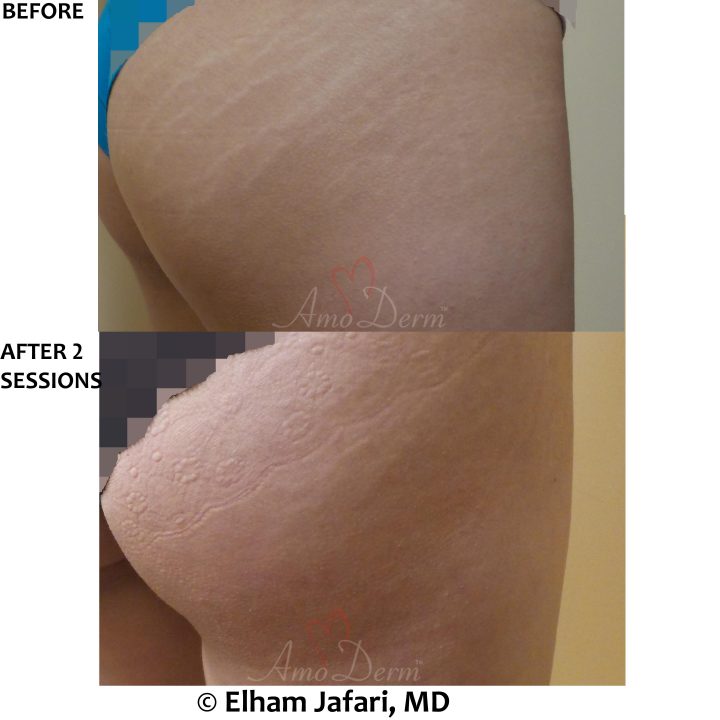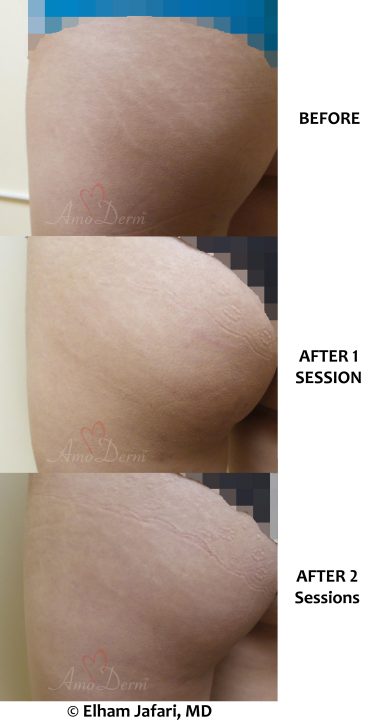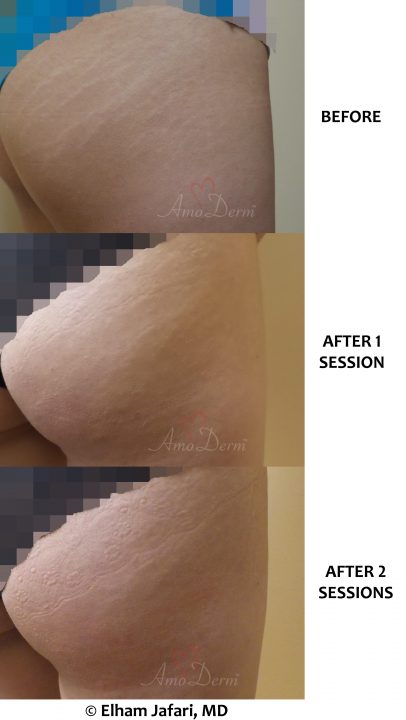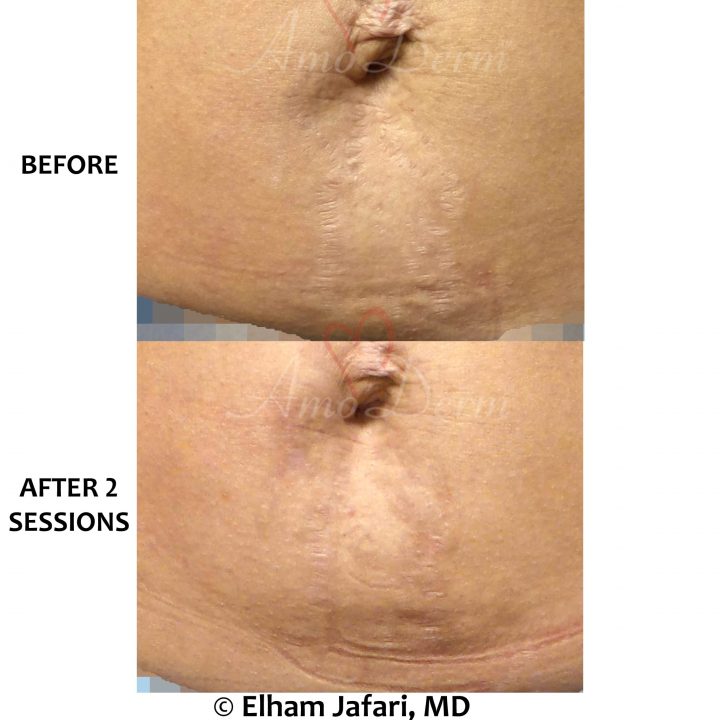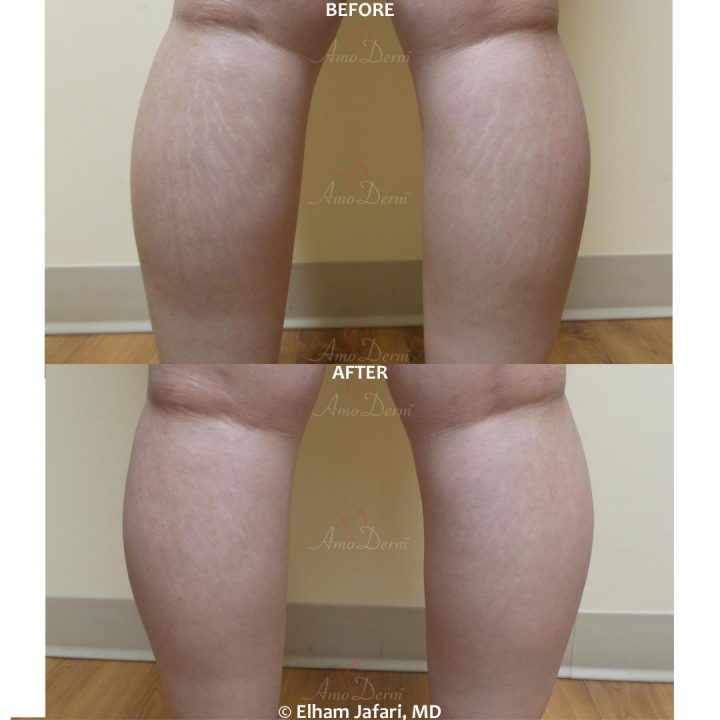Stretch Marks or Striae are indented discolored streaks on skin that can appear anywhere on the body, namely the abdomen, flanks, back, hips, buttocks, thighs, arms, underarms, and breasts. They are usually pink, purple or red in the beginning, but their coloring usually become lighter and grayer as time passes, although the usually do not completely fade away.
Stretch Marks are essentially scars formed in the dermis of the skin. Dermis is the middle layer of the skin which is primarily formed of connective tissue and it is rich in collagen, elastin, and other components of extra-cellular matrix that support the skin tightness and make it resilient against being stretched and torn apart. Stretch Marks are caused when the skin undergoes too much stretching during a relatively short period of time, resulting in microscopic tears in the dermis, which are subsequently “repaired” by the scar tissue, leaving behind the visible streaks.
What Causes Stretch Marks?
The conditions causing Stretch Marks are commonly seen in pregnancy as the body (and the skin) is trying to quickly adapt to the growing size of the uterus particularly during the final months of pregnancy, but Stretch Marks can occur in anyone and in the absence of pregnancy. Any conditions associated with rapid stretching of the skin – for example, rapid changes in weight – as well as hormonal changes and genetic factors all can result in Stretch Marks or make them worse. It is important to remember that a healthy and firm skin with adequate collagen and elastin support network is often able to demonstrate more resistance against the stretching forces, and hence it can be less prone to develop Stretch Marks. Protecting the skin from environmental damage and improving its health by various rejuvenating treatments can be effective preventive measures.
How Can Stretch Marks Be Treated?
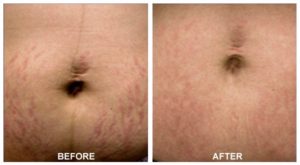
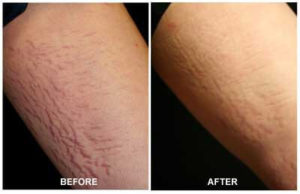
Although complete removal of the stretch marks remains a challenge, a series of laser treatments can largely reduce red and white Stretch Marks and improve the texture of the affected skin area, making the Stretch Marks barely noticeable. The best results are usually achieved with a series of 3 sessions of laser treatments, following application of the prescribed creams as instructed by your doctor at Amoderm.


